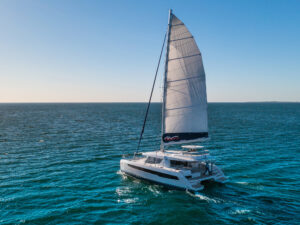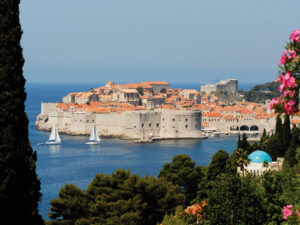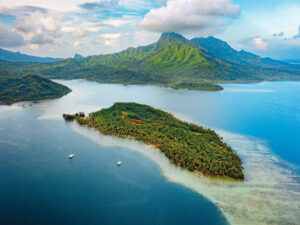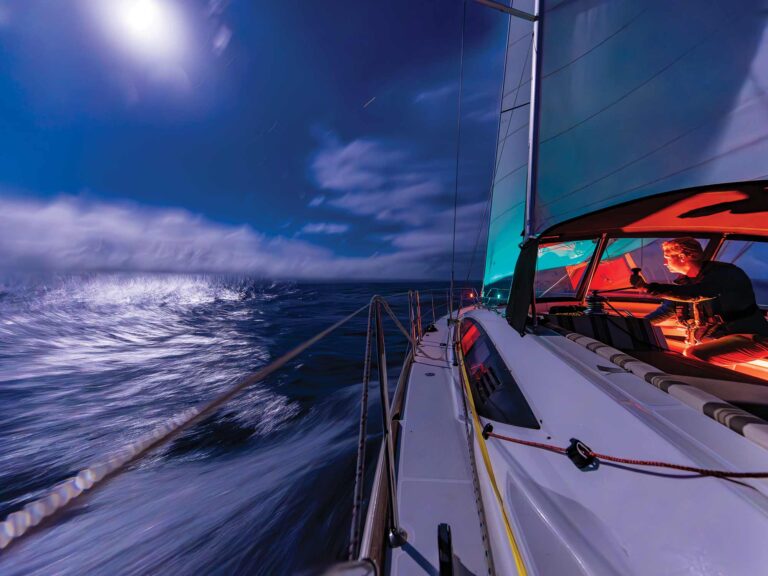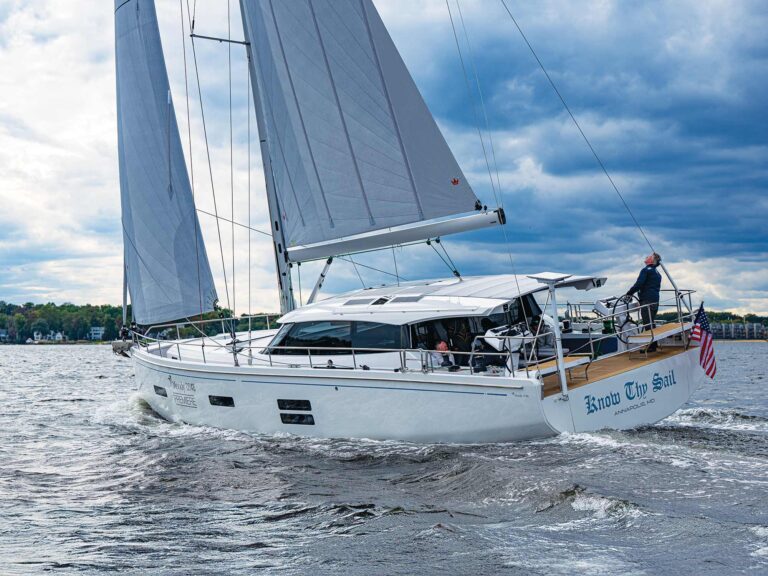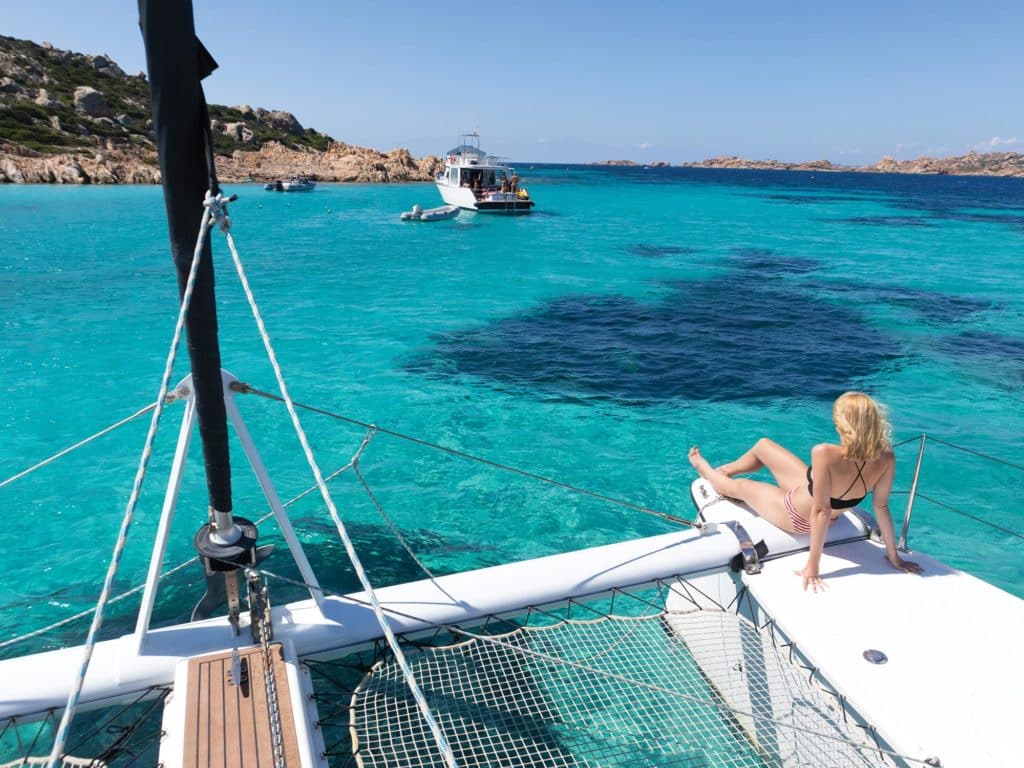
As a red-haired, fair-skinned kid growing up sailing dinghies in Southern California, I have extensive experience with sunburn. And, after helping put my dermatologist’s kids through Harvard, I now resemble Lawrence of Arabia on my bareboat outings.
Do you tell your friends you don’t worry about sunburn because you have a good base tan? That you wear a baseball cap to shade your face? That you put on SPF 15 sunblock when you’re on the water?
You, dear reader, are a prime candidate for skin cancer.
According to Tom Cutter, a former emergency-room doctor and a dedicated bareboater (and also red-haired), “There is no such thing as a base tan.” Whether you’re sprawled on deck in the islands or just sitting outside a coffee shop sipping a triple latte, the sun will damage your skin. You might not notice it now, but sun damage is cumulative, which is why construction crews and lifeguards often have skin that resembles beef jerky.
There are two areas we’ll focus on here to defeat devil sun. First, how to prevent sunburn, and second, what to do once you get it (yes, you will).
Sunburn is the same first- or second-degree burn you’d get from a hot pan or flame. Blood vessels dilate, and cell damage occurs. Generally, a sunburn appears two to five hours after exposure, with maximum effect in about 24 hours. First degree is redness (erythema) with pain, depending on the exposure. Even a mild sunburn has side effects, including itching, nausea and fever.
Second degree means clear blisters as the burn extends deeper, the skin turns white under pressure, and local infection is a possibility.
Your best protection against sunburn is to stay out of the sun. But, of course, we go bareboating to savor the sunny days and warm waters. So, find ways to protect your skin, and that means hats and clothing. A baseball cap is an open invitation to skin cancer, because it leaves the sides of your face and your ears unprotected. Best choice? A wide-brimmed floppy hat. A number of these on the sailing market won’t make you look like a dork.
Next, you’ll want tightly woven, long-sleeved shirts and long pants, but we all know that isn’t going to happen. You might at least consider the long-sleeved vented shirts aimed at fishermen. Those shirts are cool and protective. When snorkeling, Cutter says, “absolutely wear a T-shirt to save your back.”
The next step in protection is a physical sunscreen such as zinc oxide, which acts as an opaque barrier to the ultraviolet rays. These sunscreens are ideal for highly exposed areas such as the nose, lips and tips of your ears, but only if you reapply regularly.
Chemical sunblocks, though mostly transparent, are rated by SPF (sun protection factor), which is a multiplier of your sunburn time. If you normally burn in 10 minutes without protection, then an SPF 15 sunscreen should keep you from burning for 150 minutes. Note that the SPF measures only ultraviolet-B rays; there is no current measure of UVA protection.
Dermatologist Edit Olasz Harken (of the sailing gear Harken family) says: “Skipping areas is very common. About 10 to 20 percent of body surface can remain unprotected.” She notes, in particular, that “the skin around the eye is the most common area that is missed.”
Tip: The American Academy of Dermatologists recommends a minimum of SPF 35. I recommend SPF 50, unless you want Christmas cards from your dermatologist. And, because you might be in the water or taking spray, a sunscreen must last through at least 40 minutes of swimming (or 80 minutes of sweating) to be labeled “water-resistant.”
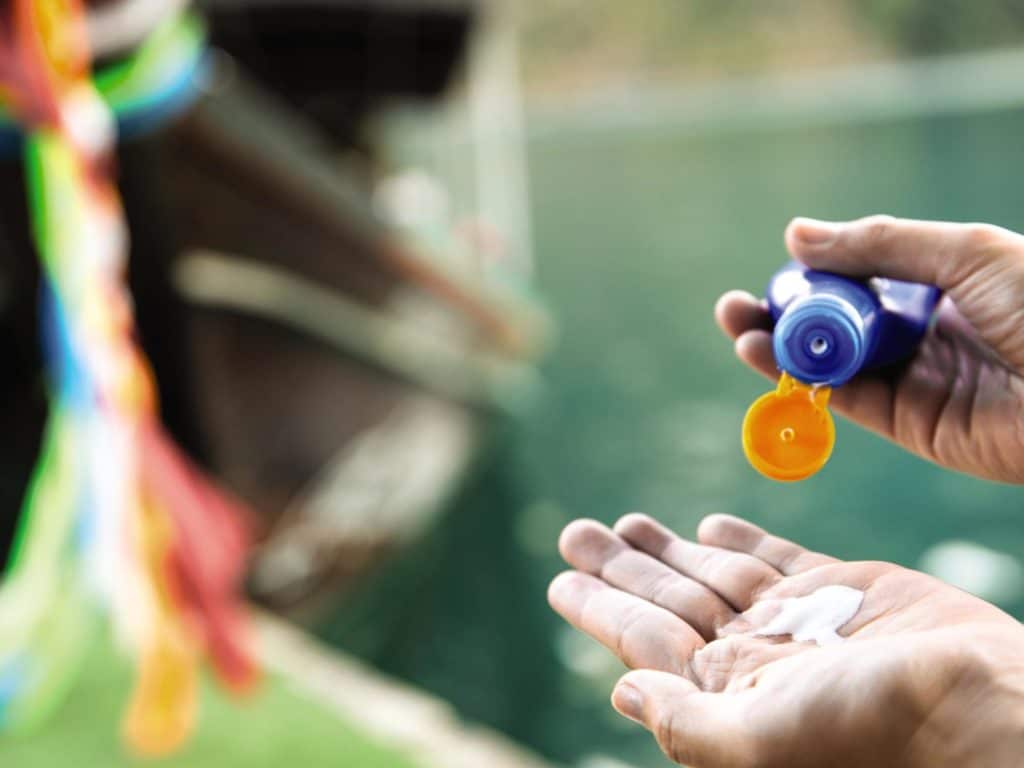
Don’t forget your eye protection either, because the overexposure of your eyes to bright sunlight has both short- and long-term effects. Your eyes will react to an overdose of UV rays with intense pain, redness, swelling and teariness, just as mountaineers’ snow blindness is caused by reflected sunlight. Ongoing eye exposure can lead to cataracts and damage to the retina. The solution is to wear sunglasses that filter out all UV rays and that have wraparound side panels to protect the cornea.
OK, so you got a sunburn. Unfortunately, time is the best cure for a sunburn, and you should minimize your sun exposure while healing because your skin will be overly sensitive.
To treat the symptoms of pain, apply cool compresses for 15 to 20 minutes regularly. Topical steroids (such as 1 percent hydrocortisone cream) can relieve the pain and swelling, and soothing lotions containing aloe vera are also helpful. Dermatologists are divided on the use of commercial “-caine” products (such as Solarcaine) that claim to relieve sunburn pain, but many users say the numbing effects are essential.
Take anti-inflammatory medications such as ibuprofen, and follow the label instructions carefully, especially with children. Acetaminophen and aspirin will also reduce the pain of sunburn.
Blisters should not be opened because they contain the natural body serum that is a protective layer. Opening a blister slows the healing and is a route for infection. If blisters break on their own, apply an antibacterial cream with a bandage.
Drink plenty of fluids because sunburn changes your metabolism and causes fluid loss through the skin, leading to dehydration.
The best cure for sunburn is to protect yourself beforehand. If you practice “safe sun,” you can still enjoy bareboating to the fullest.
Chris Caswell is editor and publisher of chartersavvy.com.


